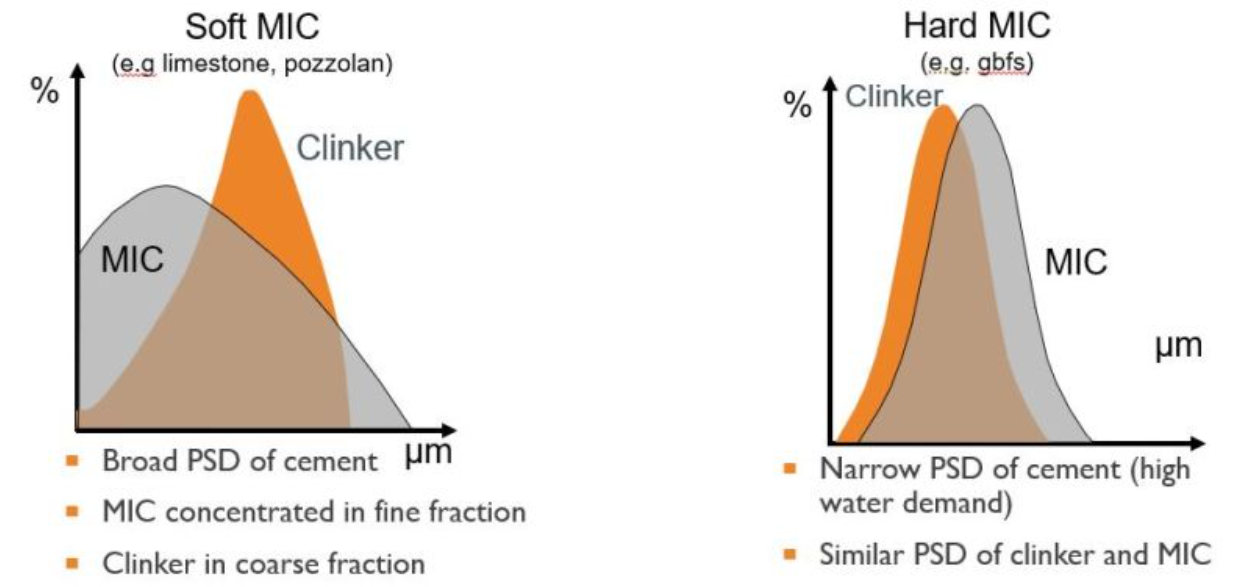Contents
Exciting Developments in the Cement Industry: Driving CO2 Reduction with Innovative Solutions

TO Download this post and all the books and excel sheets and my personal notes and presentations I collected about cement industry in the last 30 years click the below paypal link
As the global cement industry faces increasing pressure to meet ambitious CO2 reduction targets by 2030, the search for innovative and effective solutions has never been more crucial. While Carbon Capture, Utilization, and Storage (CCUS) technologies are seen as a key tool in the fight against climate change, they are not yet universally available or economically viable for all plants. As a result, the focus is shifting toward maximizing clinker reduction as a more immediate and accessible strategy for reducing carbon emissions.
The Potential of Separate Grinding in Reducing CO2 Emissions
One of the most promising avenues for achieving significant CO2 reductions is through the implementation of separate grinding technology. Traditionally, many cement plants operate using a compound grinding process, where clinker and other materials are ground together in a single mill. While this method is effective, it limits the flexibility of the grinding process and often results in higher clinker usage, which directly contributes to increased CO2 emissions.
By converting plants from compound to separate grinding, the potential for reducing clinker usage becomes more achievable. Separate grinding allows for greater control over the proportion of clinker and other supplementary cementitious materials (SCMs) in the final product. This increased flexibility enables plants to reduce clinker content by up to 5 percentage points, leading to substantial cuts in CO2 emissions.
This approach not only supports the industry’s sustainability goals but also enhances the overall efficiency and performance of the cement production process. By optimizing the use of SCMs such as fly ash, slag, and limestone, plants can produce high-quality cement with a lower carbon footprint, all while maintaining the strength and durability standards required by the market.
Exploring the Benefits of Separate Grinding
The shift to separate grinding offers several key benefits for cement plants:
- Reduced Clinker Content: The most direct benefit of separate grinding is the ability to lower the clinker content in cement. Since clinker production is the most carbon-intensive stage of the cement manufacturing process, reducing its proportion in the final product leads to significant CO2 emission reductions.
- Improved Product Quality: Separate grinding allows for more precise control over the blending of materials. This can result in better-quality cement with improved consistency and performance characteristics, meeting the specific needs of various construction applications.
- Enhanced Operational Flexibility: With separate grinding, plants can more easily adjust the proportion of SCMs based on availability, cost, and environmental considerations. This flexibility is especially valuable in regions where certain SCMs may be more readily available or where regulatory frameworks favor the use of low-clinker cements.
- Energy Efficiency Gains: Separate grinding can also lead to energy savings, as the grinding process can be optimized for each material. This results in a more efficient use of energy, further contributing to the plant’s sustainability efforts.
Unlocking Your Plant’s Potential with Expert Support
While the benefits of separate grinding are clear, implementing this technology requires careful planning and expertise. Each plant has its unique challenges and opportunities, and understanding these is key to maximizing the potential benefits of separate grinding.
This is where 𝐇𝐨𝐥𝐳𝐢𝐧𝐠𝐞𝐫 𝐂𝐨𝐧𝐬𝐮𝐥𝐭𝐢𝐧𝐠 comes in. With years of experience in the cement industry, Holzinger Consulting offers expert support in evaluating your plant’s current operations and identifying the best strategies for reducing clinker content and CO2 emissions. Our team of specialists can help you explore the possibilities of separate grinding, assess the feasibility of the conversion, and develop a tailored plan that aligns with your plant’s goals.
Whether you are looking to retrofit existing equipment, optimize your current grinding processes, or explore new grinding technologies, Holzinger Consulting is here to help. Our comprehensive approach ensures that every aspect of your plant’s operations is considered, from material availability and cost to energy efficiency and product quality.
Let’s Collaborate for a Sustainable Future
As the cement industry continues to evolve in response to climate change and sustainability demands, the importance of innovative solutions like separate grinding cannot be overstated. By reducing clinker content and lowering CO2 emissions, your plant can play a vital role in the global effort to combat climate change.
If you are interested in exploring the potential of separate grinding for your plant, we invite you to reach out to us at 𝐭𝐡𝐨𝐦𝐚𝐬@𝐡𝐨𝐥𝐳𝐢𝐧𝐠𝐞𝐫-𝐜𝐨𝐧𝐬𝐮𝐥𝐭𝐢𝐧𝐠.𝐜𝐨𝐦. Let’s discuss how we can work together to unlock your plant’s full potential and make a meaningful contribution to a more sustainable future.
Together, we can drive the cement industry forward, embracing innovation and sustainability as we strive to meet the CO2 reduction targets of 2030 and beyond.
TO Download this post and all the books and excel sheets and my personal notes and presentations I collected about cement industry in the last 30 years click the below paypal link
